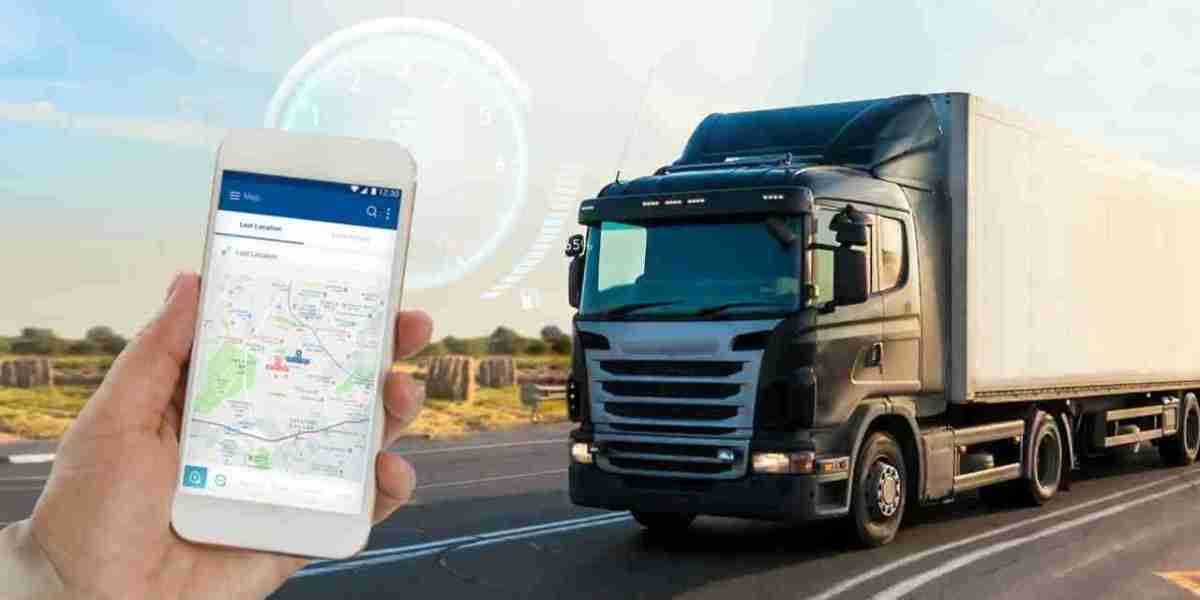In today’s world, GPS technology is essential for navigation, whether you're driving through a bustling city, hiking in the wilderness, or managing a fleet of vehicles. With the growing demand for GPS devices, there are now more options than ever, each offering different features and price points. However, choosing the right GPS device can be overwhelming, especially with so many models and functionalities to consider.
Understanding GPS Functionality
Basics of GPS Technology
GPS (Global Positioning System) is a satellite-based navigation system that allows GPS devices to determine their exact location anywhere on Earth. It works by receiving signals from a network of satellites that orbit the Earth. These signals are then processed by the GPS device to calculate its position, typically shown on a map or navigational screen.
How GPS Works
A GPS device relies on a combination of signals from at least four satellites. By triangulating the signals from these satellites, the GPS device calculates its latitude, longitude, and elevation. GPS technology is used in a variety of devices, such as smartphones, car navigation systems, and wearable fitness trackers, to provide accurate location data in real-time.
Key Features to Look for in a GPS Device
When choosing a GPS device, it’s important to know which features will best meet your needs. Some essential features include:
Navigation Accuracy: How precisely does the device calculate your location?
Maps and Route Planning: Does the device offer detailed maps, and can it suggest alternative routes?
Screen Size and Interface: Larger screens make navigation easier, but they may increase the device’s cost.
Battery Life: Consider how long the GPS lasts on a single charge, especially for outdoor or long-distance use.
Connectivity Options: Some devices offer additional connectivity features like Bluetooth or Wi-Fi for updates and integration with other devices.
Evaluating GPS Price Ranges
Overview of Price Categories (Budget, Mid-Range, High-End)
GPS devices are available in a wide range of prices, and understanding the price categories will help you make a smart decision based on your budget and required features.
Budget GPS Devices: These typically cost between BDT 2,000 and BDT 5,000. They offer basic navigation functionality, simple maps, and limited or no connectivity features. These devices are ideal for users who need a straightforward, no-frills GPS solution for occasional use.
Mid-Range GPS Devices: Ranging from BDT 5,000 to BDT 15,000, these devices provide a balance of functionality and affordability. They usually come with larger screens, real-time traffic updates, better maps, and enhanced user interfaces. These devices are great for everyday driving, road trips, or recreational activities.
High-End GPS Devices: These devices can cost BDT 15,000 and above. They include advanced features like lifetime map updates, high-definition touchscreens, voice-controlled navigation, Bluetooth connectivity, and integrated systems for vehicles. These devices are designed for professional use or long-term, frequent users who need the most accurate and feature-rich GPS experience.
Comparison of Features Typically Found in Each Price Range
Feature | Budget GPS Devices | Mid-Range GPS Devices | High-End GPS Devices |
Navigation Accuracy | Basic | Enhanced with real-time updates | Very precise and accurate |
Screen Size | Small (3-4 inches) | Medium (5-6 inches) | Large (7+ inches) |
Real-Time Traffic | Often not available | Available with some models | Always included |
Battery Life | Up to 4-6 hours | 6-12 hours | 12-24 hours |
Map Updates | Basic or occasional updates | Regular updates | Lifetime updates |
Bluetooth/Wi-Fi | Not included | Optional | Always included |
Analyzing Cost vs. Functionality
Balancing Budget with Necessary Features
When considering a GPS device, it’s important to balance the cost with the functionality you actually need. For example, if you're a casual driver or only need basic navigation, a budget device may be sufficient. However, if you're someone who frequently drives in traffic-heavy areas, having real-time traffic updates and more advanced features may justify the higher price of a mid-range or high-end device.
Consider the following use cases:
Hiking or Outdoor Navigation: If you need a GPS device for hiking or outdoor activities, you’ll likely need a portable, durable tracker with long battery life. A basic GPS tracker might suffice for simple navigation, but advanced features such as weather resistance and accurate topographical maps might be necessary for more extreme environments.
Driving and Commuting: For everyday driving, mid-range devices with real-time traffic updates, larger screens, and better routing capabilities provide the best value for money.
Professional Use: If you're a fleet manager, delivery service provider, or someone who needs frequent updates on multiple vehicles, a high-end GPS device that integrates with other devices or services might be the best choice.
Case Studies or Examples of Different Use Cases
Personal Vehicle Tracking: A family using a GPS tracker to monitor their daily commute would benefit from a mid-range GPS device with accurate navigation and easy-to-use interface. The extra cost would be justified by features like live traffic updates and turn-by-turn navigation.
Adventure and Outdoor Sports: An outdoor enthusiast looking to track hikes or mountain biking routes may opt for a budget GPS tracker with basic maps and long battery life, saving money without compromising essential features.
Professional and Fleet Management: A business owner managing a fleet of delivery trucks would benefit from a high-end GPS system that allows real-time vehicle tracking, geofencing, and detailed reports, ensuring timely deliveries and optimized routes.
Features to Consider When Choosing GPS
Essential Functionalities
Maps: Basic GPS devices often come with pre-loaded maps, while more expensive models include detailed, up-to-date maps that cover more regions and offer enhanced navigation options.
Navigation Accuracy: A GPS tracker with high-accuracy sensors and a fast satellite lock ensures that the device delivers reliable location data with minimal errors.
Battery Life: For outdoor activities or long-distance travel, a device with extended battery life is critical to avoid running out of power during important trips.
Advanced Features
Live Traffic Updates: High-end devices provide real-time traffic information, helping drivers avoid delays and optimize their routes.
Bluetooth Connectivity: Devices with Bluetooth allow integration with other smart devices, such as hands-free calling, syncing with smartphones, or even controlling the GPS device via voice commands.
Compatibility with Other Devices: For tech-savvy users, having a GPS that integrates with other devices like smartphones, tablets, or car infotainment systems can add significant value.
Understanding Your Specific Needs
Identifying Personal or Professional Requirements
Before purchasing a GPS tracker, it’s crucial to assess whether the device fits your personal or professional needs. For example:
Personal Use: Casual drivers may not need the extensive features of a high-end device, but they may value user-friendly interfaces and accurate route planning.
Professional Use: Businesses, such as delivery companies or fleet managers, will benefit from advanced GPS trackers that offer real-time tracking, geo-fencing, and driver behavior monitoring.
How Different Activities Might Prioritize Different Features
Commuting: If you primarily use your GPS device for commuting, prioritize real-time traffic data, easy-to-read maps, and quick updates.
Traveling or Road Trips: For long trips, a GPS with larger screens, advanced routing, and points of interest features may be worth the investment.
Outdoor Activities: For hikers or outdoor adventurers, battery life, portability, and the ability to track in remote areas are the most important features to consider.
Reviewing Popular GPS Models
Brief Overview of Top GPS Models at Various Price Points
Budget Model: The Garmin Drive 51 is a great budget option, offering basic navigation and clear turn-by-turn directions for around BDT 3,500 - BDT 5,000.
Mid-Range Model: The TomTom GO 620 provides real-time traffic updates, detailed maps, and a 6-inch touchscreen for BDT 10,000 - BDT 15,000.
High-End Model: The Garmin DriveSmart 65 offers a large screen, voice command, and live traffic updates, ideal for frequent travelers and businesses, priced at BDT 15,000 and up.
Pros and Cons of Each Model
Budget Models: While affordable, budget models often lack advanced features like live traffic or lifetime map updates. They are ideal for basic navigation.
Mid-Range Models: These devices strike a good balance between price and features, offering reliable navigation, traffic updates, and good screen size.
High-End Models: High-end models provide premium features, including voice control, Wi-Fi connectivity, and integrated systems, but come at a higher price point.
Tips for Making the Final Decision
Balancing Needs, Budget, and Personal Preferences
Before purchasing, ensure you are choosing the GPS device that best aligns with your needs, whether you’re looking for a budget-friendly option or a device with advanced features. Consider how frequently you'll use the GPS and whether premium features like traffic updates or real-time location tracking are essential.
Long-Term Considerations and Potential for Updates
Opt for a GPS model that offers lifetime map updates and has the potential for software upgrades, ensuring that your device stays current and useful for many years.
Conclusion
In summary, when choosing a GPS device, it’s crucial to evaluate both the price and functionality. By carefully considering your needs, comparing models, and balancing the cost with essential features, you can ensure that you get the best value for your money. Whether you're seeking a simple navigation tool or a high-end device for professional use, understanding your priorities will help guide your purchase decision.






